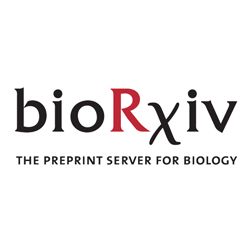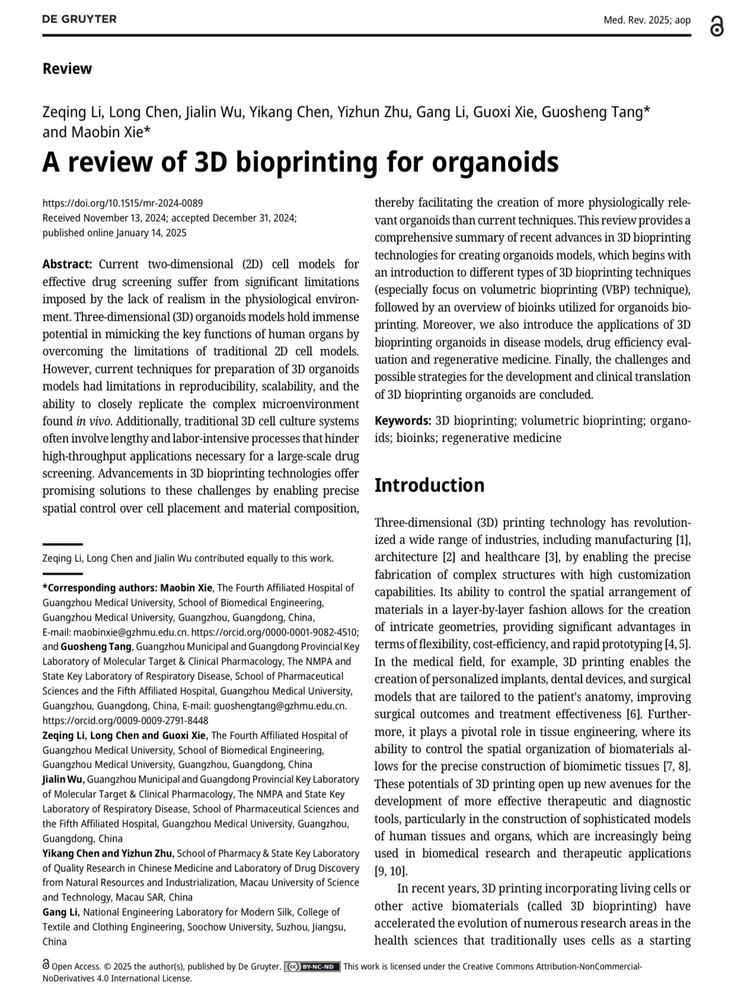ipkitten.blogspot.com/2025/11/gues...

ipkitten.blogspot.com/2025/11/gues...
📍Hyaluronic acid incorporation into hybrid alginate-based bioinks ...
👩🔬🧑🔬 K. Ziani et al.
👉 https://f.mtr.cool/aqtakgsbud

📍Hyaluronic acid incorporation into hybrid alginate-based bioinks ...
👩🔬🧑🔬 K. Ziani et al.
👉 https://f.mtr.cool/aqtakgsbud


This comprehensive review explores advanced supramolecular hydrogels and their potential to shape next-generation bioinks, an area directly linked to STRONG-UR's 3D printing technologies!
Read it ➡️ doi.org/10.1016/j.ij...
#EUScience
This comprehensive review explores advanced supramolecular hydrogels and their potential to shape next-generation bioinks, an area directly linked to STRONG-UR's 3D printing technologies!
Read it ➡️ doi.org/10.1016/j.ij...
#EUScience
A review of 3D bioprinting for organoids
"An introduction to different types of 3D bioprinting techniques, followed by an overview of bioinks utilized for organoids bioprinting."
Open Access
www.degruyterbrill.com/document/doi...


A review of 3D bioprinting for organoids
"An introduction to different types of 3D bioprinting techniques, followed by an overview of bioinks utilized for organoids bioprinting."
Open Access
www.degruyterbrill.com/document/doi...
Quantum X bio enables 3D bioprinting at the scale of cells and tissues — ideal for microfluidics, tissue models, and scaffolds with our resins or your custom bioinks.
👉 tinyurl.com/23ejd7t8
Quantum X bio enables 3D bioprinting at the scale of cells and tissues — ideal for microfluidics, tissue models, and scaffolds with our resins or your custom bioinks.
👉 tinyurl.com/23ejd7t8
3dprintingindustry.com/news/new-hyb...
3dprintingindustry.com/news/new-hyb...


👉 Full article here: doi.org/10.63654/icm...
#BiomedicalInnovation #Bioinks #Hydrogels #RegenerativeMedicine

👉 Full article here: doi.org/10.63654/icm...
#BiomedicalInnovation #Bioinks #Hydrogels #RegenerativeMedicine



Explore our innovations that aim to restore vision to millions of people:
www.keratoprinter-project.eu/innovation

Explore our innovations that aim to restore vision to millions of people:
www.keratoprinter-project.eu/innovation
💡The Route to Artery Mimetics: Hybrid Bioinks for Embedded Bioprinting of Multimaterial Cylindrical Models
📄 Advanced Functional Materials 2025
👉https://advanced.onlinelibrary.wiley.com/doi/10.1002/adfm.202419072
#bioprinting #bioinks #artery

💡The Route to Artery Mimetics: Hybrid Bioinks for Embedded Bioprinting of Multimaterial Cylindrical Models
📄 Advanced Functional Materials 2025
👉https://advanced.onlinelibrary.wiley.com/doi/10.1002/adfm.202419072
#bioprinting #bioinks #artery
Our team works on special bioinks that mimic natural tissue development and create hybrid tissues. 🏗️ 🧫
🔎 Learn more at prism-livingtissues.eu
#biomaterials #bioprinting
Our team works on special bioinks that mimic natural tissue development and create hybrid tissues. 🏗️ 🧫
🔎 Learn more at prism-livingtissues.eu
#biomaterials #bioprinting


